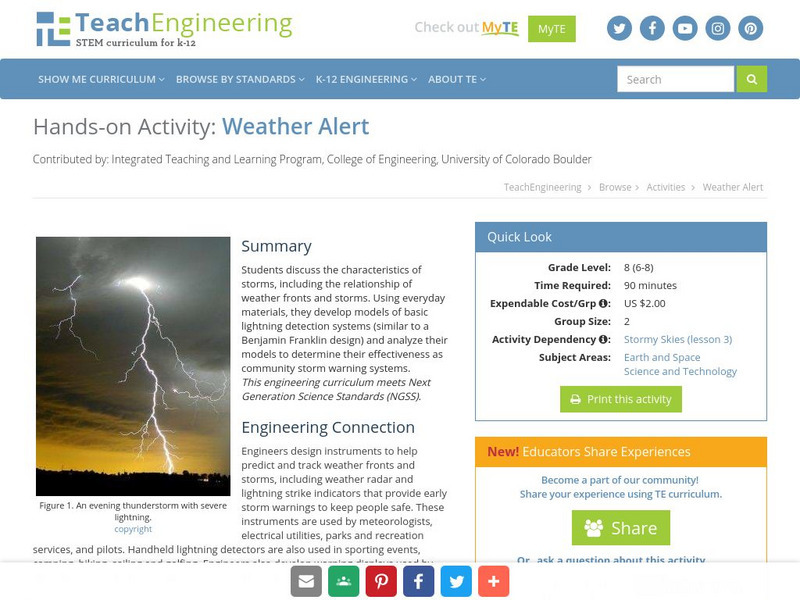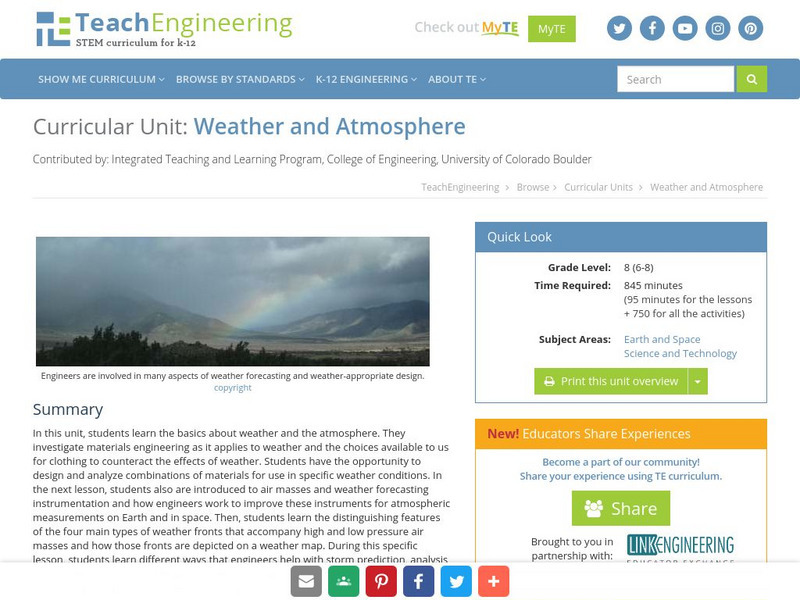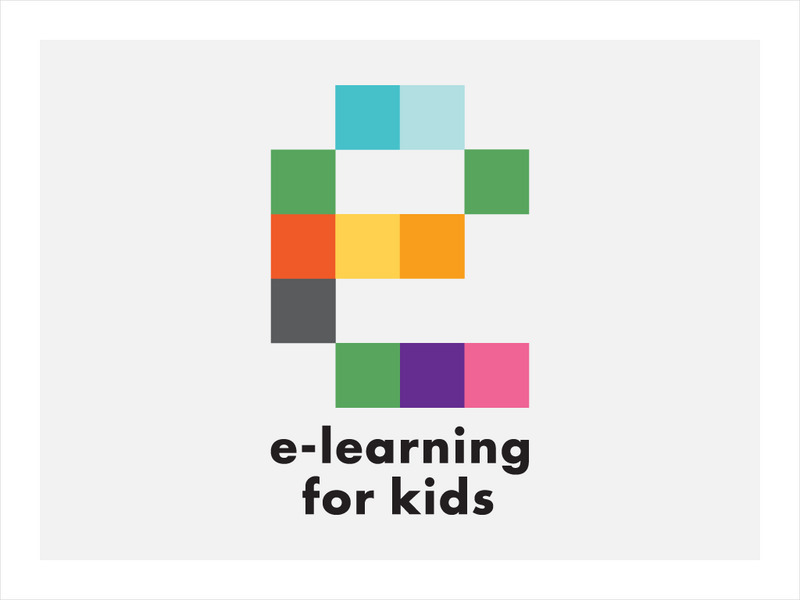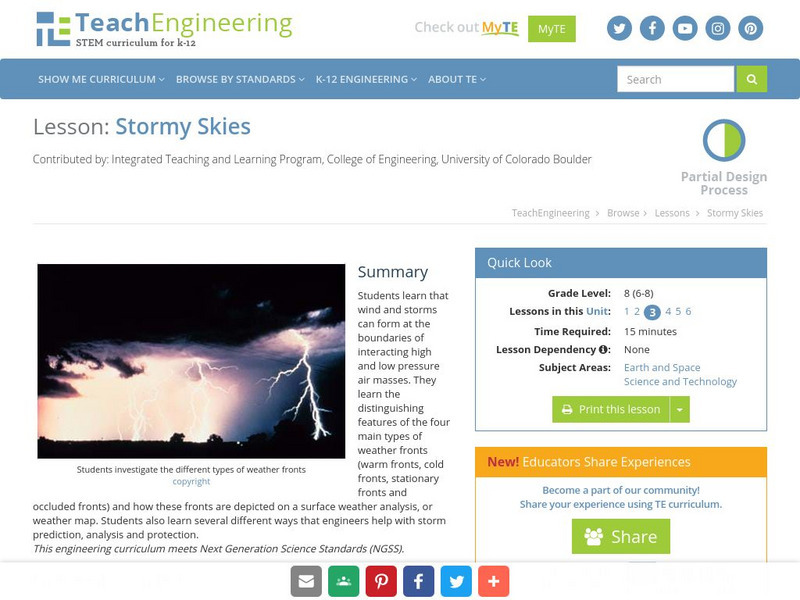Curated OER
Make A Thunderstorm!
Students create a thunderstorm by putting ice cubes and food coloring into a container and observe what happens to the food coloring. In this thunderstorm lesson plan, students discuss the cause and effects of thunderstorms and then...
Curated OER
Create Your Own Lightning
Students conduct an experiment. In this lightning lesson, students use a blanket and a dark room to simulate lightning.
Curated OER
Life in a Hurricane Zone
Students investigate the social effects of hurricanes. In this social studies lesson, students assume the persona of residents of the Dominican Republic and write diary entries and letters regarding the devastation caused by Hurricane...
Curated OER
DEW POINT
Fourth graders investigate conditions causing saturation and measure the dew point of the atmosphere performing simple experiments.
Curated OER
Precipitation
Students write their own newspaper article about a weather story using newspapers and a weather records worksheet.
Curated OER
Understanding Cloud Formation
Students read and relate the poem, "Clouds" by Aileen Fisher to a demonstration on cloud formation. They create clouds in jars using ice water and matches then discuss the ways clouds can be used to predict weather.
Curated OER
Future Time (Occupations)
In this verb usage worksheet, students recognize the future tense while identifying people and their jobs. Students are given ten statements and ten occupations which they are to match.
Curated OER
Life in a Hurricane Zone
Students study the nature of hurricanes and examine in detail the effect of Hurricane Georges upon the Dominican Republic. They explain the way in which physical systems (e.g., a hurricane) can affect human systems (e.g., the life of a...
Curated OER
Cloud Haiku
Students listen as a haiku is read by the teacher, determining what season is being portrayed in the poem. Students work together as a class and create a model haiku, then complete a worksheet, completing their own poem. Students will...
Curated OER
Expressing Future Time
In this future time worksheet, students read 10 sentences and decide who is speaking the words. They write the letter of the person who is speaking the words from the list at the top of the page. They use each person once.
Curated OER
Thunderstorms
Fourth graders investigate the attraction between two different charges to explain the concept of lightning in a thunderstorm.
Curated OER
Understanding Cloud Formation
Students explore air and clouds by watching demonstration. They perform an experiment to measure air pressure changes.
Alabama Learning Exchange
Researching Hurricanes with Technology
Young scholars explain the components that make up a hurricane.
Curated OER
Making Lightening: In Your Mouth
Students look at a lightening demonstration. For this lightening lesson, students bite into a wintergreen candy while looking in the mirror in a dark room. They see sparks in their mouths if they perform the task correctly.
TeachEngineering
Teach Engineering: Weather Alert
Students discuss the characteristics of storms, including the relationship of weather fronts and storms. Using simple materials, the students develop a model of a simple lightning detection system and analyze their model to determine its...
USA Today
Usa Today Weather: Understanding Storms and Fronts
Discusses air pressure, fronts, and storm formation. Links on page to well-illustrated and animated additional information.
TeachEngineering
Teach Engineering: Weather and Atmosphere
In this unit, students learn the basics about weather and the atmosphere. They investigate materials engineering as it applies to weather and the choices available to us for clothing to counteract the effects of weather. Students have...
Other
Classzone: Weather Forecasters Use Advanced Technologies [Pdf]
An excerpt from an earth science textbook. The chapter shown here covers concepts about how weather data is collected, displayed and how meteorologists forecast fronts and storms.
E-learning for Kids
E Learning for Kids: Science: Antarctica Research Center: Describe Different Weather Patterns
This module provides informational text about weather. Students will learn about precipitation and storm fronts. Students will also learn about different types of storms, including the following: hurricanes, cyclones, and typhoons.
University of Illinois
University of Illinois Urbana Champaign: Severe Storms
This site talks about severe storms. Topics include the dangers of thunderstorms, types of thunderstorms, components of thunderstorms, tornadoes, and modeling.
TeachEngineering
Teach Engineering: Stormy Skies
Learners learn that wind and storms can form at the boundaries of interacting high and low pressure air masses. They learn the distinguishing features of the four main types of weather fronts (warm fronts, cold fronts, stationary fronts...
University Corporation for Atmospheric Research
Ucar: Anatomy of a Storm's Clouds
Students analyze cloud data from a storm that crossed the United States in late November 2019. They identify cloud types from photos of the sky in various locations to identify the zonation of clouds across a cold and warm front.
PBS
Pbs News Hour Extra: Satellites Orbit the Sun to Better Predict Solar Storms
For the first time, NASA scientists have generated a full image of the sun, front and back, using twin orbiting satellites. The new view of Earth's star will allow for the study of solar weather events like coronal mass ejections that...
University Corporation for Atmospheric Research
Ucar: A Global Look at Moving Air: Atmospheric Circulation
Even with disruptions like weather fronts and storms, there is a consistent pattern to how air moves around our planet's atmosphere. This pattern, called atmospheric circulation, is caused because the Sun heats the Earth more at the...

















![Classzone: Weather Forecasters Use Advanced Technologies [Pdf] eBook Classzone: Weather Forecasters Use Advanced Technologies [Pdf] eBook](https://static.lp.lexp.cloud/images/attachment_defaults/resource/large/FPO-knovation.png)


